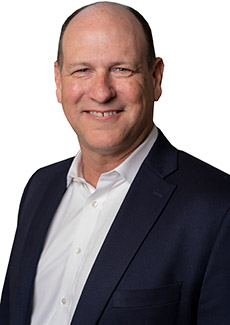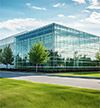Area Development: QTS has grown into one of the top co-location providers in North America. What are some of the key site selection considerations that have enabled you to scale rapidly?
David Robey: I would put those in two categories. The first is obvious—resources, local processes, permitting, and tactical items. You have to have labor, resources, and the ability to execute, including geographic considerations. But the second critical element is community engagement. That’s core to our culture. We're in service to our customers, employees, and communities. The only way to move quickly is to create value for all three—workers, communities, and customers. When those elements align, you can do amazing things.
AD: That community angle is one we hear about often, especially in the face of growing NIMBYism. But utilities might be an even bigger pressure point. How does QTS engage with power providers when you’re scouting locations?
Robey: It used to be that site selection led the process. Today, we start with the utility. Especially as workloads get larger, you need to lead with what makes sense from a utility point of view. Then you can go source land to support that project. That’s been the major pivot in recent years with the shift toward larger campuses. We’re committed to partnering with utility companies to identify innovative and sustainable ways to generate and secure power.
AD: You’re known for those large campuses. How do you balance the need to bank land for the future with the need to move fast?
Robey: The scale and land banking require you to be intentional. You have to understand upfront that you’re building for a future. Our large-scale campus approach began many years ago, which put us in a great position as demand grew. It’s about being proactive with the community and the utility—otherwise, you’re trying to make something into what it was never intended to be.

AD: There’s been a lot of conversation in our pages lately about water use and the cooling needs of new compute loads. What’s your view on that?
Robey: The industry is moving away from water-intensive designs. Seven years ago, QTS made the change so that any new buildings do not consume water to cool the data center. This QTS Freedom design is one that employs solutions to remove heat without consuming water. Evaporative systems, which consume large amounts of water, are something we’ve moved away from. We believe the industry should push harder on that. It affects communities, and we all need to be cautious with water as a resource. Our water-free system saves more than 48 million gallons of water annually per data center – the equivalent of water use from more than 2,200 U.S. homes per year. We will continue to implement this system to improve water conservation in every community in which we operate.
AD: How about connectivity? How important is proximity to long-haul fiber in your location strategy?
Robey: Historically, data centers followed the old real estate rule of “location, location, location”—defined by fiber routes and proximity to diverse connectivity options. But the model has evolved. Today, AI workloads allow us to be more flexible. That’s a good thing. If you can get utilities and some fiber to more remote locations, you’re able to spread these out across geographies. It’s not just about being central anymore.
AD: That likely helps with siting challenges too. But how do you manage the labor aspect in more remote regions?
Robey: It’s not as much about where the data center is located now—it’s about the labor to build and support it. If you’re 200 miles from the next town, you don’t have a data center problem—you have a resource problem. So you still have to solve for the people side of the equation. It’s also interesting to see the trickle effect—data centers elevate localities as active technology markets by creating technology ecosystems, driving more technology and infrastructure companies to the area and creating more high-wage technology jobs.
AD: Let’s talk incentives. Data centers don’t always fit neatly into a traditional incentive structure. What kind of programs are most meaningful to QTS?
Robey: That really depends on the local area. There’s no one-size-fits-all approach. Historically, sales tax abatements have been the simplest vehicle. But in any engagement, the economic stimulation that comes with a project far outweighs the incentive offered. For us, it’s not about the structure—it’s about whether it brings value to our customers and communities. We're trying to bring those two things together: customer value and community value.
AD: What trends are you seeing from your customers—especially hyperscalers—in terms of ESG, infrastructure, and location priorities?
Robey: The biggest challenge they’re facing is capacity planning. It’s hard for them to predict where they need to be and what they need. That creates timing issues. QTS’s unique access to infrastructure at scale helps us move quickly to meet our customers’ accelerating needs. The more we can be transparent and communicate with each other, the better we can prepare. We want to do this in a way that’s socially responsible, serving communities as well. Transparency helps everyone plan, and it’s about all of us partnering. One group can’t succeed at the expense of others. It has to be a joint success.
AD: Would you say that transparency is a differentiator for QTS?
Robey: I would. Historically, the data center industry was more closed off in terms of information sharing. But over the past five to 10 years, we’ve been more open—sharing data, project info, and our perspective. We hope the whole industry, our customers, and our communities benefit from that. It’s our way of doing our part to support this innovation economy. We’re able to do things like this video chat because we built and operate a data center.
AD: Looking ahead, what markets—domestic or global—are primed for QTS growth?
Robey: The U.S. is still a very favorable market, and we’re coast to coast here. We also have a lot of work going on in Europe. Within the U.S., it’s about finding the right mix of utility access, labor, and geographic diversity. There’s value in being dispersed—coast to coast and north to south—to meet client needs.
AD: Finally, is there anything else you'd want site selectors or commercial real estate professionals to understand about the data center space today?
Robey: It’s about blocking and tackling, and hopefully we added some insight that’s valuable to your audience.


